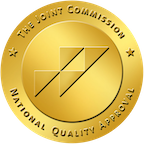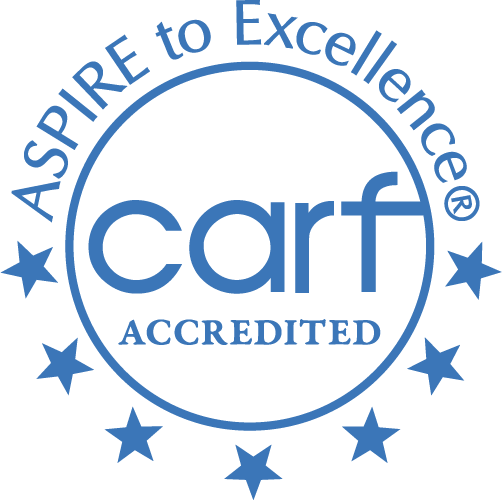Skip To Rehab Listing
That is one of the reasons the Sheldon area has 25 alcohol and drug rehab centers available to local residents who struggle with substance abuse. These centers serve the region's population of 6,245 no matter age or situations in order to make effective treatment accessible to anyone who needs it.
Drug and Alcohol Rehab Program Settings and Methods
Sheldon area residents who face drug and alcohol addiction problems can select from a range of recovery settings based upon factors such as their location and individual needs.
Treatment settings may consist of the following: short term treatment programs, inpatient detox centers, inpatient addiction treatment centers, long term addiction treatment centers, outpatient substance abuse counseling.
Clients can also choose from several treatment approaches designed to provide successful services for their needs: trauma therapy, group therapy, cognitive/behavior therapy, dialectical behavior therapy, cognitive/behavior therapy, brief intervention approach.
Special Programs for Addiction Treatment
Addiction is not necessarily the same for everyone, so treatment approaches must be individualized. That is why substance abuse treatment centers in the Sheldon area offer various special services intended to deliver a customized approach to recovery for clients. These programs include the following: suicide prevention services, veterans, persons who have experienced sexual abuse, programs for the hearing impaired, domestic violence, seniors or older adults.
Recovery Payment Options
Clients often avoid recovery because of worries about money. However, drug and alcohol rehab facilities make a range of financing alternatives available to clients in order to address their financial needs and improve access to recovery. Some of these options are listed here: cash or self-payment, private insurance, sliding fee scale, military insurance, county or local government funds, state corrections or juvenile justice funds.
Drug and alcohol treatment is accessible for Sheldon, IA. residents via a great deal of different programs, methods, and financing options that put lasting sobriety within reach.
Commonly Asked Questions about Addiction and Treatment
What is the Cognitive Behavioral Method for treating addiction?
"The Cognitive Behavioral Method, or Cognitive Behavioral Therapy (CBT), is an evidence-based psychological approach for treating addiction that focuses on identifying and modifying dysfunctional thought patterns, beliefs, and behaviors that contribute to substance use disorders. CBT is grounded in the understanding that an individual's thoughts, feelings, and behaviors are interconnected, and by changing maladaptive thought patterns and behaviors, they can better manage their emotions and reduce their reliance on addictive substances.
CBT for addiction treatment typically involves the following key components:
- Identifying triggers: The first step in CBT is to help individuals recognize the situations, thoughts, or emotions that trigger their substance use. This awareness enables them to develop strategies to manage these triggers effectively and avoid relapse.
- Challenging negative thoughts: CBT helps individuals recognize and challenge irrational or negative thoughts and beliefs that contribute to their addiction. By examining the evidence for and against these thoughts and replacing them with more balanced, rational alternatives, individuals can better control their emotions and behaviors.
- Developing healthy coping strategies: CBT focuses on teaching individuals new, adaptive coping skills to deal with stress, cravings, or negative emotions without resorting to substance use. These strategies may include relaxation techniques, problem-solving skills, assertiveness training, or time management, among others.
- Building self-efficacy: CBT helps individuals build confidence in their ability to cope with high-risk situations and resist the urge to use substances. This increased self-efficacy can contribute to long-term recovery and reduce the likelihood of relapse.
- Relapse prevention: CBT incorporates relapse prevention techniques to help individuals identify early warning signs of relapse and develop a plan to address these signs effectively. This may involve practicing coping strategies, seeking support from others, or making adjustments to their environment or daily routine.
CBT for addiction treatment can be delivered in individual, group, or family therapy settings and is often used in conjunction with other treatment modalities, such as medication-assisted treatment (MAT), peer support groups, or motivational interviewing. CBT has been found to be effective in treating various substance use disorders, including alcohol, opioid, and stimulant addiction, as well as co-occurring mental health disorders, such as anxiety and depression."
When a person is a substance abuser, don't they realize their life is being destroyed?
Substance Use Disorder, commonly known as addiction, is a complex condition that can significantly impact a person's judgment, perceptions, and decision-making abilities. Here are a few reasons why someone struggling with substance abuse might not fully realize the extent of the damage it's causing to their life:
Denial: It's common for individuals suffering from addiction to be in denial about the extent of their problem. They might underestimate how much or how often they use, or they may not acknowledge the negative consequences that their substance use is causing.
Altered Brain Function: Addiction affects the brain's reward system and impairs cognitive function. This can distort a person's ability to clearly see the harm that their substance use is causing. They may focus intensely on the immediate rewards of drug use while minimizing or ignoring the long-term negative consequences.
Co-occurring Disorders: Many people with Substance Use Disorder also have other mental health disorders, such as depression or anxiety. These conditions can exacerbate feelings of denial or self-deception about the extent of the substance abuse problem.
Fear and Shame: Fear of withdrawal, fear of change, and shame about their substance use can also prevent individuals from admitting to themselves or others the full extent of their problem.
Lack of Awareness: Some individuals may not understand the signs and symptoms of addiction, or they may not recognize that they can seek help and that recovery is possible.
What is the purpose of drugs such as methadone, suboxone and subutex in the recovery process?
Methadone, Suboxone (a combination of buprenorphine and naloxone), and Subutex (buprenorphine) are medications used in Medication-Assisted Treatment (MAT) for opioid use disorders. Their primary purpose in the recovery process is to help manage withdrawal symptoms and reduce cravings, facilitating a safer, more comfortable transition to abstinence or long-term management of the disorder. Here's a more detailed look at how each of these medications function:
Methadone: Methadone is a long-acting opioid agonist, which means it activates the same receptors in the brain that other opioids like heroin, morphine, or prescription painkillers do. However, it does so more slowly and for a longer duration, without causing the intense euphoria associated with misuse of those drugs. This helps to mitigate withdrawal symptoms and cravings, enabling individuals to function more normally in daily life.
Suboxone: Suboxone contains two active ingredients: buprenorphine and naloxone. Buprenorphine is a partial opioid agonist, meaning it activates the opioid receptors in the brain, but to a lesser extent than full agonists like heroin or methadone. This can help manage cravings and withdrawal symptoms without producing the high associated with opioid misuse. Naloxone is an opioid antagonist, meaning it blocks the effects of opioids. It's included in Suboxone to discourage misuse of the medication; if someone tries to inject Suboxone, the naloxone will trigger withdrawal symptoms.
Subutex: Subutex is the brand name for buprenorphine alone. Like in Suboxone, buprenorphine in Subutex serves to lessen withdrawal symptoms and reduce cravings. It is typically used in the initial stages of treatment, while Suboxone is more commonly used for maintenance.
These medications are typically used as part of a comprehensive treatment plan that also includes counseling and behavioral therapies. It's important to note that while these medications can be highly effective in supporting recovery, they should be used under the guidance of a healthcare provider due to the risk of misuse and potential side effects. Each individual's treatment plan should be tailored to their unique needs and circumstances to ensure the best possible outcomes.














